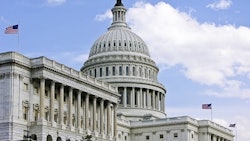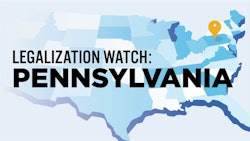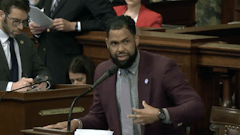This November, five states will put the question of cannabis legalization before voters, with four states—Arizona, New Jersey, South Dakota and Montana—potentially approving adult-use measures. While that is something to celebrate, at the beginning of 2020, the U.S. landscape looked even more promising.
Take, for instance, Nebraska. Despite the challenges COVID-19 presented to campaign organizers, with stay-at-home orders keeping people away from places they’d normally sign petitions and social distancing guidelines making conversations difficult, Nebraskans for Medical Marijuana miraculously was able to collect more than enough signatures required for a medical ballot initiative.
The constitutional amendment language included questions for legalizing cannabis for medicinal use, as well as creating a system to produce and distribute it. Opponents said the measure included two questions, which is a violation of the state constitution, and therefore should not move forward, while proponents argued that it was reasonable to spell out access under the legalization initiative. Bob Evnen, Nebraska’s secretary of state, said the measure met the legal requirements to be on the ballot.
However, the state supreme court agreed with challengers that the measure was not valid under state law, and the initiative will not appear on the ballot this fall. Organizers said they were disappointed because the wishes of nearly 200,000 Nebraskans would not be honored.
This is just one example of the challenges that persist in the cannabis industry. Another challenge is that, despite the fact most cannabis businesses were deemed essential when the pandemic first shut many other industries down, these legitimate businesses that create job opportunities, pay taxes and provide medicine still are not able to access federal relief dollars, including those set up in the wake of COVID-19.
In Oregon, wildfires threaten the livelihoods of many cultivators, and several lawmakers have introduced a bill to prevent the federal government from denying cannabis businesses access to federal disaster relief because of the Schedule 1 status of cannabis.
Other than federal legalization, there was hope this year that the MORE Act would advance in Congress, which would federally decriminalize cannabis by removing it from the Controlled Substances Act, potentially opening up these channels of relief for cultivators. The U.S. House of Representatives delayed the vote indefinitely, indicating that the COVID-19 relief package was a priority.
Until there is federal legalization, cannabis companies still will be more vulnerable than others to the impacts of economic and natural disasters. Neither Democrats nor Republicans have made cannabis legalization a part of their national party platforms for the upcoming elections. There is no doubt that legalizing adult-use cannabis in New Jersey, Montana, Arizona and South Dakota—which would bring the total number of states allowing adult-use to 15—will continue the momentum toward ending federal prohibition. And as more states come online, the voices advocating for federal legalization and to even the playing field for this industry will be ever louder.
























